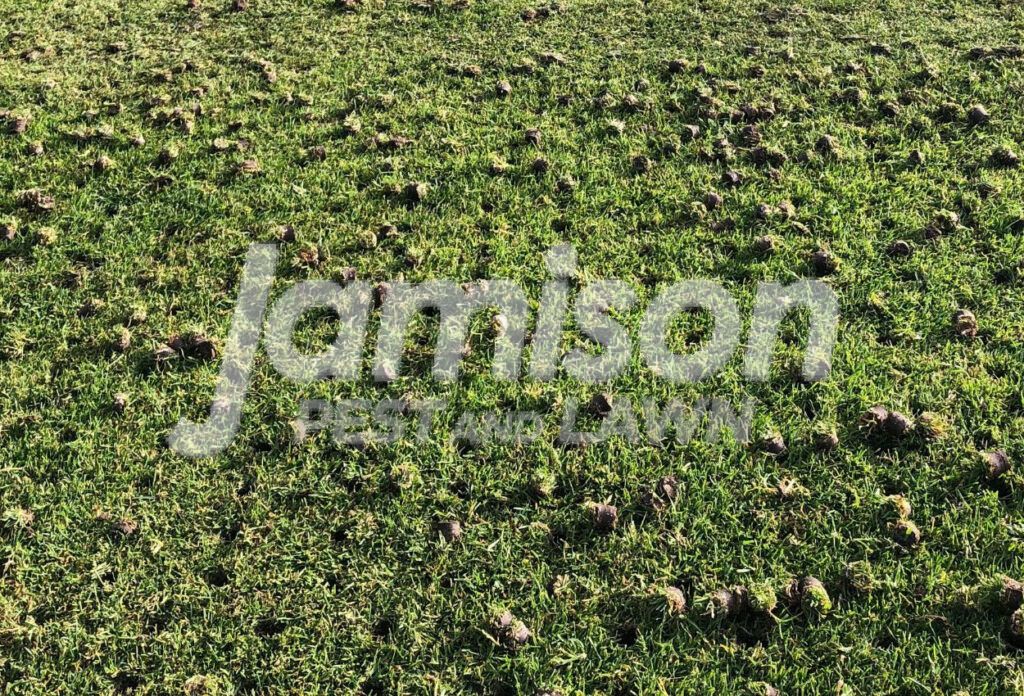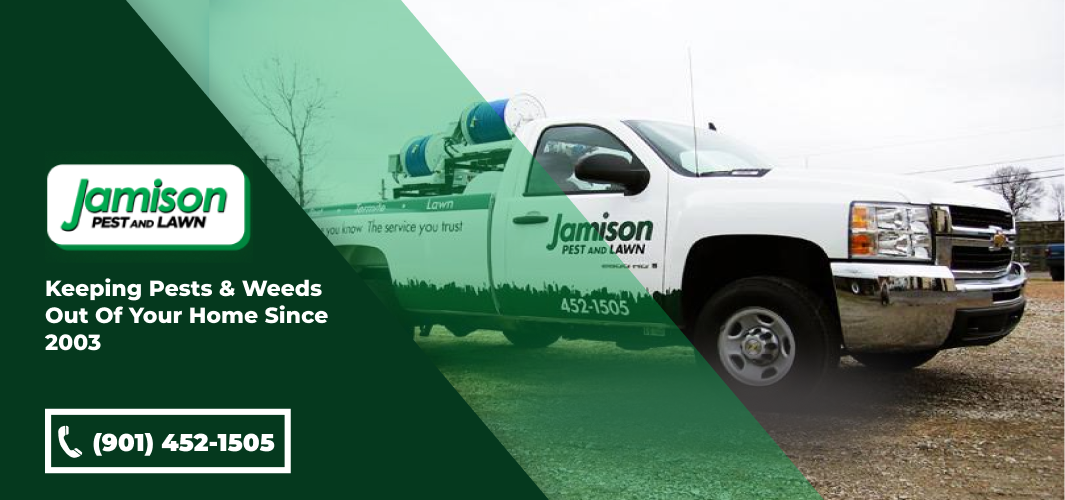Does your lawn feel hard and compact? Is it not as lush and green as you’d like? You might be overlooking one simple but crucial task: lawn aeration. Having your own backyard is no less than a luxury, but you need to be proactive to maintain this luxury.
This includes regular mowing, watering, and applying pre-emergent herbicides. But before you do all that, you need to ensure the soil is in good condition.
Even the most well-maintained lawns can struggle if the soil becomes compacted. When this happens, water, nutrients, and oxygen can’t reach the roots effectively. Over time, this results in thin, patchy grass that fails to thrive. Fortunately, aeration can resolve this and help restore your lawn’s health. In this blog post, we talk about:
- What Is Lawn Aeration
- Benefits Of Lawn Aeration
- How To Aerate Your Lawn
What is Lawn Aeration?
Lawn aeration is the process of creating small holes in your lawn in order to loosen compact soil and allow air, water, and nutrients to reach the grass roots. It’s typically done using a specialized tool called an aerator, which pulls small plugs of soil from the ground. These holes allow the roots to breathe and absorb the essential elements they need to grow stronger and healthier.

Why is my soil compacted in the first place?
Over time, if the soil isn’t given much attention, the soil tends to get compacted (hardened), and this limits the air and water that able to get through to the roots.
Compact soil often occurs due to heavy foot traffic, mowing with heavy equipment, or excessive thatch build-up. Over time, these factors press the soil particles together, reducing the amount of space for air and water to flow. Clay-heavy soils are particularly prone to compaction, making aeration even more essential in these conditions.
Why Should You Aerate Your Lawn?
As a homeowner, you are most likely concerned about what benefits lawn aeration brings to your yard. When done properly, aeration helps your lawn thrive in more ways than one. Let’s look at some of the benefits of aeration:
Stronger Roots:
For anything to thrive, you need a solid base, a foundation. The foundation of a good lawn is its roots. By improving access to oxygen and nutrients, aeration encourages deeper, healthier root growth. Strong roots provide stability to the grass, making it more resistant to stress from drought or heavy foot traffic.
Better Water Absorption:
Aerated soil absorbs water more efficiently, reducing runoff and improving drought resistance. This ensures that rainwater and irrigation penetrate the ground rather than pool on the surface. By allowing water to seep deeper into the soil, aeration prevents shallow root growth, which is common in compact lawns. Deeper roots can access moisture reserves more effectively, making the lawn more resilient during dry spells. Improved water absorption also reduces the risk of water wastage, and you will also not need to water too frequently.
Enhanced Fertilizer Performance:
Nutrients from fertilizers penetrate deeper into aerated soil, maximizing their effectiveness. This improved distribution leads to even more growth and better overall lawn health. With better nutrient absorption, your lawn will require less frequent feeding, saving you time and money.
Reduced Thatch Build-up:
Aeration helps break down thatch (the layer of dead grass and roots), preventing it from suffocating your lawn. Thatch control is crucial for maintaining airflow and reducing the risk of lawn disease. By regularly aerating, you create an environment where beneficial microorganisms can thrive, further aiding in the natural breakdown of thatch.
Lusher, Greener Lawn:
With improved airflow and nutrient delivery, grass can grow thicker, greener, and healthier. This lush growth not only enhances your lawn’s curb appeal, it also strengthens the turf, reducing the chances of weed infestations. A denser lawn acts as a natural defense, crowding out unwanted plants and ensuring your yard stays vibrant and uniform.
Improved Pest and Disease Resistance:
Healthier grass with strong roots is better equipped to fight off pests, weeds, and lawn diseases. A well-aerated lawn also minimizes conditions that attract harmful insects. Your lawn will be less vulnerable to patchy, unhealthy areas that pests tend to target.
When Should You Aerate Your Lawn?
Now that we know how important aeration is for your lawn, let’s go over when you should do this. Timing is key when it comes to aeration. Aerating at the wrong time can stress your lawn rather than help it. Here’s when to aerate a lawn based on types of grass.
Cool-Season Grasses (e.g., Kentucky bluegrass, fescue): Aerate in early fall or early spring when the grass is actively growing. Fall is ideal because the grass can recover quickly while mild temperatures and rainfall are common.
Warm-Season Grasses (e.g., Bermuda, Zoysia): These are the grass types you will be finding more in Tennessee. Aerate in late spring or early summer when these grass types are entering their peak growth period.
Avoid aerating during extreme heat or drought conditions, as this can put additional stress on your lawn.
How To Aerate Your Lawn
Now comes the major question: how do I practice lawn aeration? Proper lawn aeration requires the use of an aerating device or a machine, and there are two types of aerators for lawns: a spike aerator and a plug aerator.
Steps To Aerate Your Lawn
Aerating your lawn can be a DIY project, but it’s essential to follow the proper steps for the best results:
Prepare Your Lawn: Mow your grass slightly shorter than usual and water it a day or two before aerating. Moist soil is easier to penetrate than dry ground.
Choose the Right Equipment: A plug aerator is the most effective tool. It removes small plugs of soil, creating space for air and nutrients. Spike aerators are also available but tend to be less effective as they only push holes into the soil without removing plugs.
Aerate in Multiple Directions: To ensure even coverage, make multiple passes in different directions across your lawn.
Leave the Plugs Behind: The small soil plugs will break down naturally and enrich the soil. There’s no need to remove them.
Follow-Up with Care: After aerating, consider overseeding and applying fertilizer to encourage new growth. Water your lawn regularly in the weeks that follow to help the roots recover and thrive.
Should I Aerate The Lawn Myself?
For lawn aeration, you can either rent the machine (several stores allow you to rent core aerators) or hire a professional. Soil aeration needs to be done carefully, and using the machine can be a bit complicated, so you’re more than likely to want professional help.
Your Premier Experts For Lawn Aeration
Lawn aeration is a simple yet powerful step that can transform your yard. By improving soil health, promoting stronger roots, and enhancing nutrient absorption, aeration helps you achieve the lush, vibrant lawn you’ve always wanted. If you’re unsure about tackling the job yourself, consider hiring a professional lawn care company to ensure the best results.
Contact our team at Jamison Pest and Lawn today at (901) 452-1505 to learn more about how we can help you.




